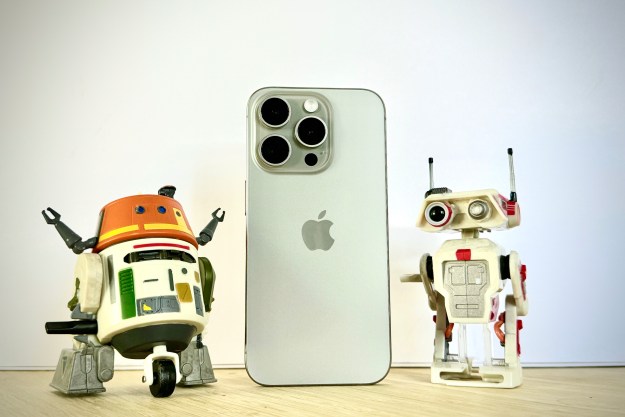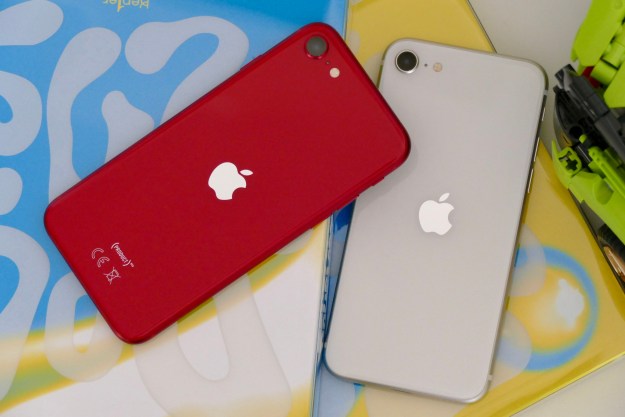Because the Fusion is lens only and doesn’t need to integrate its own cameras, the lens and app could very well be one of the cheapest 360 solutions for the iPhone on the market, with an expected retail price of $69 and Indiegogo discounts bringing that cost down even further.
The Fusion, compatible with the iPhone 7, 7 Plus, 8 and 8 Plus, adds two wide angle lenses to both the front and back cameras. By widening the view from the built-in cameras, the iPhone can then see in 360 degrees. The Fusion app then stitches those two images together into a 6K resolution shot.
Because there’s no actual camera to power up, the Fusion doesn’t need batteries. The 1.4-ounce system just slides over the top of the iPhone to align the add-on lenses with the iPhone’s built-in cameras.
The Fusion app uses real-time stitching, which means users can still preview the shot before shooting. The app also supports brightness adjustments and a self-timer. Snapping a photo is a one-touch control despite the involvement of both cameras and the app includes that scrollable 360 view, as well as tiny planet, panorama, or virtual reality shooting modes. Sharing to Facebook, Twitter, and Whatsapp is built-in, and while Instagram doesn’t yet support 360, users can share a square format little planet shot on Instagram, too.
By using hardware already built into the iPhone, the Fusion adds 360 photos for a significant price drop from the other add-on cameras on the market. The catch? The Fusion is only for shooting still photos and time-lapses; the company makes no mention of video capabilities. The lens also isn’t compatible with the iPhone X yet, but the company says it plans to launch an X version once the lens system can be fully tested with Apple’s new flagship smartphone.
Fusion is in the production stage, and is being developed by the Hong Kong-based company NoMatterWhat Technologies, the same group behind the Spincle 360 app. The company has taken to Indiegogo to raise funds for production, and the Fusion has already reached the $10,000 goal after just two days. The campaign remains open for another month and if production and the final stages of the product are successful, backers can pick up the 360 lens system for as low as $44 with estimated shipping in February 2018.
Editors' Recommendations
- This is the iPhone concept of my dreams
- I found an amazing new way to use my iPhone 15 Pro Max
- Are you having iPhone alarm problems? A fix is coming soon
- Nomad’s new iPhone case and Apple Watch band may be its coolest yet
- 5 phones you should buy instead of the iPhone 15






